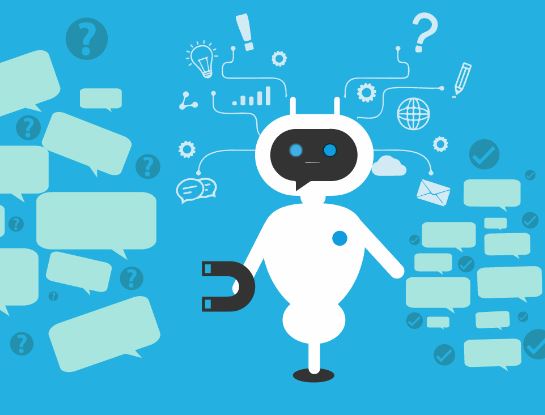Introduction
Do chatbots really work for lead generation. Well have you ever found yourself chatting with a customer service rep, only to realize you’re actually talking to a robot? Yes, that’s right, a chatbot. These artificial intelligence-powered virtual assistants are transforming the way businesses interact with customers. And guess what? They’re not just for answering frequently asked questions. They’re also ace players in the game of lead generation.
Remember, for any business, generating quality leads is like finding gold. It’s an essential process to keep the sales pipeline filled and maintain a steady stream of potential customers.
So, let’s dive into the realm of chatbots and how they work their magic in lead generation. We’ll explore what chatbots are, the benefits they bring to lead generation, some real-life success stories, the challenges they may pose, and how to mitigate these. Grab your explorer’s hat and let’s get started!
What are Chatbots?
From Siri to Alexa, you’ve likely had a conversation with a chatbot. But what exactly are they? Let’s dive in!
Chatbots, in the simplest terms, are software applications designed to simulate human conversation. Whether it’s answering your quick question or helping you order pizza, their main goal is to streamline interactions and enhance user experience.
Now, not all bots are created equal. They come in different forms depending on their functionality:
- Rule-based chatbots: These are basic bots that work on predefined rules. They can only respond to specific commands and fail to understand if the user deviates from these commands.
- AI-powered chatbots: These bots use machine learning and natural language processing to understand context and intent. They learn from past interactions and can handle complex requests.
Chatbots interact with users primarily through text input (like in a messaging app), but some provide voice capabilities (think Siri or Alexa). The user sends a message or command, the bot processes this input, determines an appropriate response, and then delivers that response to the user.
In the following sections, we’ll delve into how these virtual assistants can become lead generation heroes! So let’s keep going, shall we?
Benefits of Using Chatbots for Lead Generation
Let’s dive deep into the world of chatbots and their role in lead generation! A key benefit of using chatbots is their 24/7 availability to engage with potential leads. Whilst humans need to sleep, chatbots don’t, making them the perfect tool to interact with potential clients around the clock. No matter what time zone your leads are in, a chatbot will be there to greet them.
“Chatbots don’t sleep, so your business doesn’t either.”
Personalization plays a giant role in improving user experience, and guess what? Chatbots have got that covered too. They can deliver personalized interactions by remembering past conversations and tailoring responses accordingly. This level of personalization not only enhances the user experience but also builds trust and rapport.
Lead qualification can often be a tedious process. Not with chatbots! They’re efficient at lead qualification and data collection. By asking predefined questions, they can quickly determine if a visitor matches your ideal customer profile or not. As an added bonus, all this information is automatically stored and organized for your sales team to use.
“Chatbots are not just about engagement; they’re about intelligent engagement.”
Last but definitely not least, chatbots excel at automated lead nurturing and follow-ups. Once a lead is qualified, it’s crucial to nurture them until they’re ready to make a purchase decision. And yep, you guessed it – chatbots can automate this process too!
Chatbots might seem like futuristic technology, but they’re here and revolutionizing lead generation as we know it. But wait! We’re not done yet; let’s delve into some real-life success stories in our next section.
Case Studies: Successful Chatbot Implementations for Lead Generation
Let’s bring the benefits of chatbots for lead generation into real-world perspective through some inspiring case studies.
Chatbots, Lead Conversion, and Company X
Imagine Company X, a leading online retailer. They integrated a rule-based chatbot to their e-commerce platform and witnessed a meteoric rise in their lead conversion rate by 30%. The chatbot was programmed to answer FAQs, recommend products based on browsing history and even assist customers through the checkout process. A simple solution with an impressive outcome!
Company Y and the Power of Chatbot Integration
Next in line is Company Y, a renowned financial institution. They opted for an AI-powered chatbot to generate more qualified leads. The results? A significant boost in their qualified leads by 40%. Their chatbot was designed to guide users through complex banking jargon and procedures, making it easier for potential customers to understand their services.
Company Z: Improving Customer Engagement with Chatbots
Lastly, we have Company Z, a popular travel agency. They employed a chatbot on their booking platform which resulted in improved customer engagement and lead quality. Their chatbot interaction rates increased by 50%, creating more opportunities for personalized offers and upgrades.
These examples showcase how various industries can harness the power of chatbots to enhance their lead generation efforts. However, it’s not always sunshine and rainbows in the world of chatbots; there are challenges and limitations that must be addressed too. And remember, behind each successful implementation lies careful planning and strategizing.
Challenges and Limitations of Chatbots for Lead Generation
Chatbots, like any technology, come with their own set of challenges and limitations. Let’s not forget that chatbots are only as intelligent as they’re programmed to be. Limitations in understanding and response capabilities can make interactions less than perfect. Toss in a complex query or a pinch of sarcasm, and you could easily throw a chatbot off its game.
In the world of lead generation, misinterpretation and miscommunication can be costly. Imagine a potential client asking for product specs, and the chatbot providing the lunch menu instead! It might seem laughable but these snafus do happen.
A significant stumbling block for chatbots is the concern around privacy and data security. In this era where personal data is as precious as gold, businesses can’t afford to play fast and loose with client information. Not to mention, regulations like GDPR demand strict compliance on consumer data handling.
And then we have the ever-present need for maintenance and updates. Chatbots aren’t a set-it-and-forget-it deal. They require constant monitoring, tweaking, and updating to keep up with evolving customer needs, industry trends, and technological advancements.
We’ve seen how chatbots can be potent tools in lead generation, yet it’s clear they’re not without their drawbacks. So how do we navigate these challenges? Do we throw the baby out with the bathwater or is there a way to make chatbots work despite these limitations? Stick around as we delve into best practices for implementing chatbots in the next section.
Mitigating Challenges: Best Practices for Chatbot Implementation
When deploying chatbots for lead generation, it’s not all about setting them up and leaving them to their own devices. A set of best practices exist to ensure the maximum effectiveness of these digital assistants.
1. Thorough testing and training of chatbot responses
Firstly, aim for excellence in chatbot responses. How? By thoroughly testing and training your virtual assistant. Engage in rigorous trials simulating real-world scenarios before letting your chatbot loose on potential customers. It’s a game of responses; better the responses, higher the lead generation.
2. Clear communication of chatbot limitations to users
Clear skies, clear mind, clear communication. Users appreciate honesty. Don’t let your chatbot pretend to be a know-it-all; it’s not and that’s okay! Make sure it communicates its limitations upfront to avoid user frustration and maintain a positive interaction.
“Hey! I’m here to help you with XYZ. If you need assistance outside these areas, I can connect you with a human representative.”
This simple message can make a world of difference in managing user expectations.
3. Implementing data privacy measures and secure storage
With great power comes great responsibility – more so when handling user data! Ensure that your chatbot is built with solid data privacy measures in place. Secure storage isn’t optional, it’s mandatory. Remember, trust is currency; don’t lose it over weak data protection policies.
4. Regular monitoring and maintenance for optimal performance
Last but definitely not least, keep an eye on your chatbot post-deployment. Regular monitoring helps identify any glitches or shortcomings promptly while routine maintenance ensures your bot stays updated and efficient.
There you have it! Four best practices to keep your lead-generating chatbots firing on all cylinders.
Rolling Up the Red Carpet
We’ve journeyed through the landscape of chatbots and their role in lead generation, weighing up their pros and cons. Chatbots, always ready to engage, offer personalization that scales and an efficient way to qualify leads and collect data. Yet, they are not without their challenges – from potential miscommunication to privacy concerns.
But remember, there’s no one-size-fits-all in digital marketing.
Aligning your chatbot strategy with your business objectives and target audience is key.
Looking ahead, we see a future where chatbots continue to evolve and become even more sophisticated. AI advancements will further enhance their ability to understand and interact with users, making them an even more powerful tool for businesses.
Chatbots: your tireless, tech-savvy lead generation sidekick.
So go forth, let your chatbot do the heavy lifting while you focus on closing those deals!
Check out more about lead generation on our website, or book a demo to find out more!


